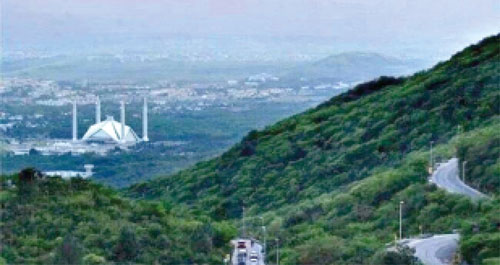The mesmerizing Margalla Hills National Park was facing serious threat of plastic pollution due to littering and irresponsible tourism is damaging the natural environment of the national park home to numerous species of flora and fauna.
“The Islamabad Wildlife Management Board (IWMB) is the custodian of the national park that regularly endeavors to exhort the visitors and tourists to change their behaviour towards nature and preserve this pristine natural preserve,” an IWMB official said when approached to respond on the issue.
He said the Margalla Hills National Park’s flora and fauna was facing serious risks of survival due to frequent fires in peak season, and irresponsible visitors polluting the natural environment with their non-degradable injurious plastic waste.
He said the National Park was spreading over 17,386 hectares area having six hiking tracks or trails out of which four were opened for the public. He added that above 17,000 regular hikers and birds watchers visit the trails every week.
The IWMB official regretted that the regular trekkers had a docile and careful attitude towards nature as they used to venture with professional purpose.
However, the seasonal visitors with just a recreational motive played havoc in the nature and used to do littering in the national park that was damaging to the health of wild animals, he added.
To a question, he said the IWMB staff used to check every visitor prior to entering the trails but some people who were entering from shortcuts or other alternate routes from within in the national park near Monal and other routes leading to Daman-e-Koh used to bring food items and then leave their trash to roam in the national park.
He said the conservation of nature was a shared responsibility and individual role in realizing the worth of nature was imperative to achieve the goal of zero waste and plastic free national park.










